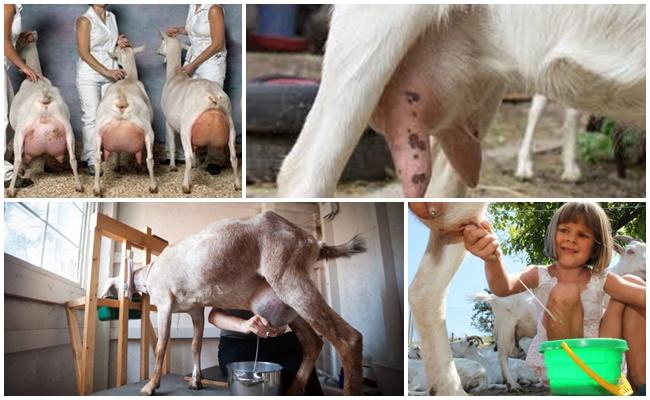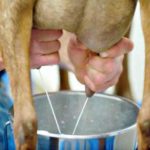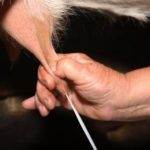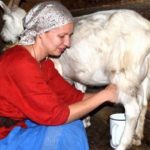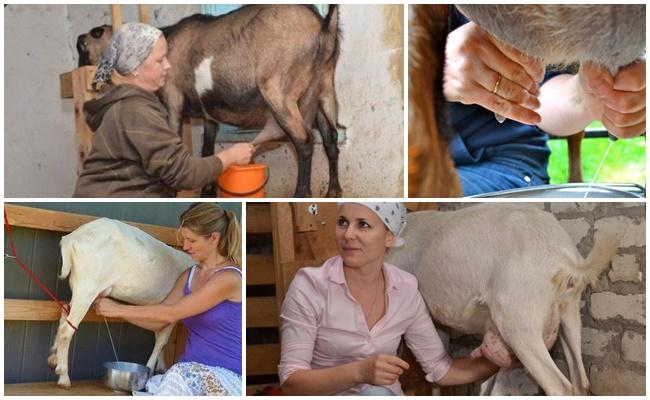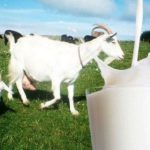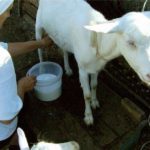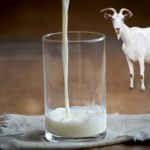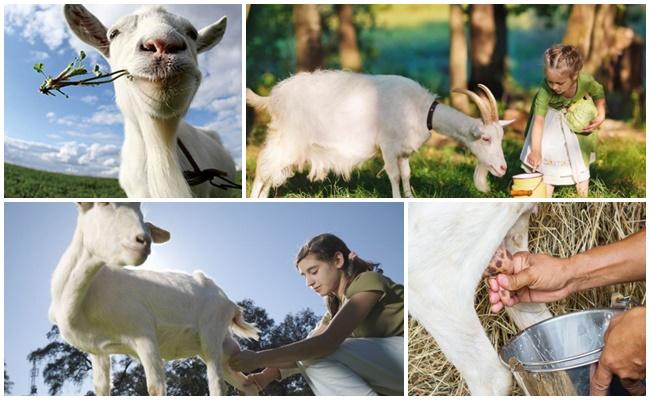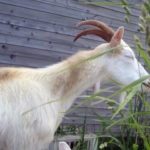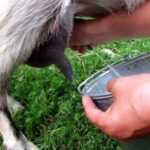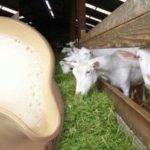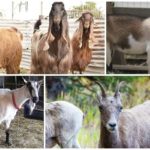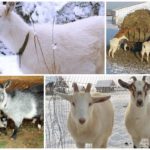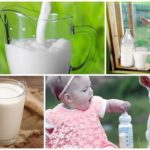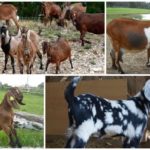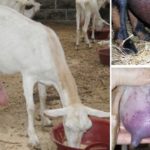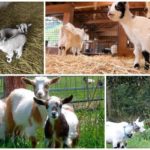Under the same conditions of keeping and equal feeding, one goat produces no more than 2 liters of milk, and the second - 4-5 liters. Milk yield is not a constant indicator; how much milk a goat gives per day depends on the breed, age of the animal, number of births, anatomical features of the udder, quality of care and nutrition. A large amount of valuable product can only be obtained from a mature individual of a dairy breed.
At what age does a goat begin to produce milk?
You should not think that a goat will be a constant supplier of milk, since it has an udder.To gain milking status, a pet must become pregnant. Milk production in the goat's udder begins during the first pregnancy. The product produced is enough to feed kids, but mature dairy goats produce an excess amount of product. The excess is taken by a person for his needs.
To ensure that a pet who becomes pregnant for the first time begins to produce more milk after giving birth, she regularly undergoes udder massage. The young goat will get used to the milking process, it will not cause her stress, and massage movements will help avoid stagnation in the udder tissue and, as a result, mastitis.
A goat is ripe for mating by the age of 5 months, but this is too early an age for pregnancy. With a male there is a female who has reached 1.5 years of age. A baby goat develops in the womb for 150 days. It turns out that the owner receives his first milk from a 2-year-old pet.
How many liters does a goat produce per day on average?
During the first week after birth, colostrum is formed in the udder - a fatty substance that strengthens the immune system of newborn babies. All colostrum is used to feed the kids. Then, over the course of 2-3 months, the owner gives most of the milk he gives to the growing cubs. If the owner has not separated the kids from their mother, then milking for personal needs can begin only when the offspring reaches 3 months of age and begins to eat a standard adult diet.
After the first lambing, the goat’s productivity is small; the daily volume of product is, on average, 1.5 liters. But high-yielding purebred pets, having given birth for the first time, are capable of producing 3-4 liters per day. A goat becomes most productive after the 3rd or 4th pregnancy.
A pregnant goat cannot be milked before giving birth.The exception is swelling of the udder from excessive milk production, which causes the animal to experience severe discomfort. In this case, milking becomes an act of helping the suffering pet.
Average statistical indicators of goat milk yield:
- per day – 2-4 l;
- per week – 14 liters;
- in the spring month - 55 l;
- in the summer month - 80 l;
- per year – 400 l;
- for a lifetime - 4-5 tons.
Number of milk yields depending on breed
The Swiss are the most productive dairy goats (Saanen, Alpine), the average daily amount of product from one individual is 6-8 liters. However, representatives of Swiss breeds cost a lot; the minimum price for one animal is 20 thousand rubles.
The record holder for milk yield is the Saanen breed. One individual can produce up to 3 thousand liters per year. The milk yield of domestic purebred goats is more modest: a dairy cow produces approximately 3 liters per day, which is less than that of an elite Swiss cat, but more than that of a mature ordinary goat.
Comparative daily and annual productivity of animals of different breeds is given in the table.
| Breed | Milk yield per day, l | Average annual productivity, l | Fat content of the product, % |
| Saanen | 6 | 1200 | 3,8-4,5 |
| alpine | 5 | 900 | 3,5 |
| Toggenburg | 3 | 800 | 3,5 |
| Czech | 5 | 1200 | 3,5-4,5 |
| La Mancha | 4 | 1000 | 4 |
| Nubian | 4,5 | 1000 | 4,5 |
| Cameroonian | 2 | 200 | 5,2 |
| Russian | 2,5 | 500 | 4,5 |
| Gorkovskaya | 3 | 500 | 4,5-5,5 |
| marl | 1,5 | 250 | 4,5 |
Volumes depending on age
After the first birth, you should not expect high productivity from the goat. The increase in milk yield is gradual, from the first lambing to subsequent ones.
You should start calculating the amount of milk after the 3-4th birth; these indicators will reflect the real productivity of a mature individual.If the average daily milk yield of a goat that gave birth for the first time, depending on the breed, ranges from 2 to 4 liters, then after the 3rd pregnancy it ranges from 4 to 8 liters. That is, the difference between milk yield at the beginning and middle of milking age is 50%.
A goat produces the maximum amount of milk before the age of 5. After 2-3 years the animal is milked moderately. And after 7-8 years, the volume of milk decreases monthly. At this age, meat goats are slaughtered, but dairy pets live up to 12, and some up to 15 years. With proper care and quality nutrition, lactation can last up to 12 years. Saanen pets are considered to be long-livers, living up to 18-20 years.
A decrease in the amount of milk in an elderly pet is associated not only with the aging of the body, but also with the deterioration of the teeth. The goat cannot absorb and chew food normally, which negatively affects the performance of the mammary glands.
Timing of lactation
The duration of the lactation period is determined by the breed. The record holders should be the Saanen and Gorky goats, providing a product without loss of quality for 8-9 months. But, on average, pets supply their owner with milk for 6-7 months. These are the summer, autumn months and a few days of winter. A goat produces the greatest amount of milk in the summer, when it consumes succulent grass feed.
How to increase milk yield?
The main reason for decreased milk production is poor nutrition. In the summer months, when sending goats out to graze, they carefully select the pasture. This should be a meadow with high soil moisture, but without signs of waterlogging, where the grass cover is lush.
There are herbs that can be used to increase milk yield. This:
- clover;
- chamomile;
- parsley;
- nettle;
- horse sorrel;
- clear
Goats whose herbal diet includes parsley and other herbs may produce milk with a specific odor. It is recommended to periodically treat pregnant and postpartum females with several walnut kernels, which not only increases the amount of milk, but also makes it fattier. Animals are given clover that is slightly wilted so that their digestion does not deteriorate. Laminaria and nettles are placed in the feeder in dried form.
And in winter, it is useful to treat your pets with harvested apple, plum, birch, and shrub branches to enhance lactation.
Goats that have given birth should not feel thirsty; the amount of milk produced depends on the consumption of water. If there is no natural drinking source on the pasture, then the animals are given water before being released from the barn. And the pets in the barn are given water after they have eaten enough hay.
The quality of milk deteriorates when the goat's body is deficient in mineral elements. Therefore, pregnant and postpartum females are given nutritional supplements containing a set of minerals necessary for lactation. The veterinarian will tell you which drug to choose. A good and cheap source of minerals is salt rock, which animals lick whenever they want.
Walking in sunny weather is beneficial for pregnant goats. It not only improves the immunity of unborn kids, but also promotes good milk yield.
On the recommendation of a veterinarian, a first-time goat can receive prebiotics. These drugs strengthen the immune system, help food digest, which increases milk yield by 20%.
Reasons for decreased milk yield
When the amount of milk decreases, you can suspect:
- animal aging;
- hypovitaminosis and mineral deficiency;
- poor quality diet;
- deterioration of appetite due to changing the usual food to a new one;
- insufficient water intake;
- fear, being in a stressful state;
- development of internal disease;
- stress from a change of owner or home;
- helminthiasis;
- entering into a state of sexual hunting;
- illiterate maintenance, cruelty to animals.
Pregnant and postpartum goats should be kept in a separate room in comfortable conditions. In the winter months, the air temperature in the goat’s home should not fall below +8 °C, and in the summer it should not rise above +20 °C. There should be no drafts or dirt in the barn where the milking pet is kept.
How much milk a goat will give depends on the behavior and attitude of the owner. The animal is sensitive to the lack of care and attention. Milk production decreases significantly when goats are stressed. Therefore, the owner should treat the animals kindly, not shout at them, not hit them, or frighten them with loud noises.

